By Susanne von Rosenberg, UC Master Gardener of Napa County
Weeds can serve some useful purposes, but unless you're an unusual gardener, you probably still prefer to decide what gets to grow in your garden and what doesn't. The four basic weed control methods are prevention, removal, smothering and exhaustion. Most gardeners will need a combination of these methods to control their weeds.
Annual weeds (those that sprout from seed each year) are easier to control than perennial weeds (those that regrow each year from underground structures such as roots, tubers and underground stems). Perennial weeds can spread from their underground structures and by seed.
Prevention consists of all the activities that keep weeds from growing or spreading. The most important one by far is preventing weeds from setting seed. Some plants, such as wild oats, produce “only” about 250 seeds per plant. More ambitious weeds can produce over 200,000 seeds per plant.
It's also important to avoid promoting weed growth. Soil scientists estimate that there are 140 weed seeds per pound of surface soil in cropland (or 200 million per acre). Most weed seeds sprout from the top half-inch of soil. If you can avoid disturbing the soil, you can minimize the weed seeds you bring to the surface for germination.
Controlling drip irrigation is another weed prevention method. Only put water where you want plants to grow.
Mulch is effective in controlling annual weeds as long as it's thick enough. Mulches prevent light from reaching the weed seeds, so weeds can't grow. I prefer mulches from natural materials, such as wood chips and compost. Coarse mulches need to be three to six inches thick to keep out the light, and finer mulches such as sawdust and grass clippings need to be one to three inches thick.
Make sure that water can still reach your plants; mulches absorb some of the water. Certain quick-growing vegetable plants, such as squashes, beans and tomatoes, form a thick leaf cover that also helps to shade out weeds.
If you feel ambitious, you can kill many weed seeds through soil solarization. This process will take four to six during the hottest part of the year, so you will not be able to grow a summer garden in that area. To be effective, it needs to be done correctly. The UC Integrated Pest Management Program website has detailed information.
To avoid spreading weeds between different areas of your garden or between your garden and someone else's, clean your garden equipment, clothing and shoes. Finally, avoid importing seeds. While manure is great for your garden, make sure it's composted first. Horses and cattle can pass 20 percent of the viable seeds they eat. Composting can kill many of those seeds, but bird manure is usually a better choice.
As for removal, one effective approach is “water, wait, cultivate.” Ready your planting bed several weeks before you intend to plant, and then water it to encourage weed seeds to sprout. Hoe out the sprouts, keeping your hoe shallow to cut off the weeds just below the surface. Then repeat this process. This approach will remove about 95 percent of the weeds that would normally sprout. When you plant, disturb the soil as little as possible to avoid bringing new weed seeds to the surface. Keep hoeing or removing weeds by hand throughout the growing season. If you've applied mulch, it's usually easy to remove the relatively few weeds that sprout by hand.
Smothering weeds is simply another form of mulching known as sheet mulching. Cut back your weeds to six inches or less and cover the area with cardboard, overlapping the sheets by at least six inches. Apply mulch on top of the cardboard. The cardboard will break down in three to four months if you keep it moist, and it prevents annual weeds from returning.
Sheet mulching will also temporarily banish perennial weeds, but they may re-emerge after the cardboard has broken down. For me, sheet mulching is the fastest and easiest way to reclaim weedy areas.
To get rid of perennial weeds that are already established in your garden, you need to exhaust their food supply stored in their roots or other underground structures. Let them grow a bit, cut them back to below the ground surface, then let them grow a bit again. Don't let them grow a lot because that could allow them to store more food. This process may take several years to work. If you have widespread perennial weeds (for example, Bermuda grass), you can repeatedly mow them close to the ground.
You might have noticed that I did not mention herbicides. They are truly a last resort and are usually not needed in home gardens. If you are growing your ornamentals, food plants and turf correctly, they will outperform most weeds. If you do have to use herbicides, follow the label directions carefully and use the least amount possible. However you tackle your weeds, just remember: they may be tough, but you're a lot smarter.
UC IPM has more information about weeds for Napa county home gardeners. Start here:
http://ipm.ucanr.edu/PMG/PESTNOTES/pn7441.html
The UC Master Gardeners of Napa County are volunteers who provide University of California research-based information on home gardening. To find out more about home gardening or upcoming programs, visit the Master Gardener website (napamg.ucanr.edu). Our office is temporarily closed but we are answering questions remotely and by email. Send your gardening questions to mastergardeners@countyofnapa.org or leave a phone message at 707-253-4143 and a Master Gardener will respond shortly.
Attached Images:
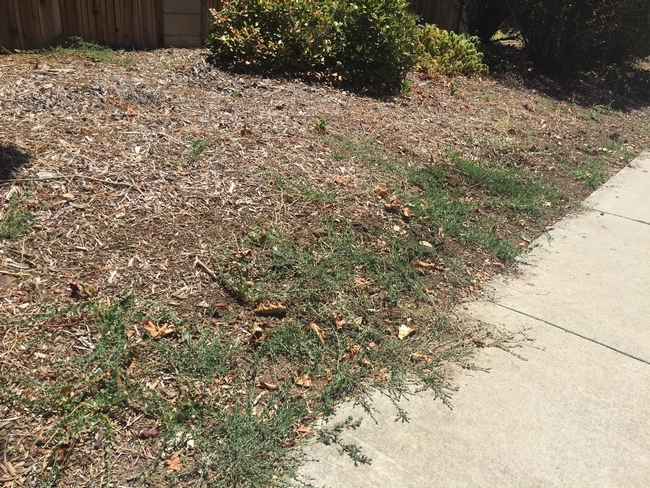
Weeds in landscape (UC ANR)
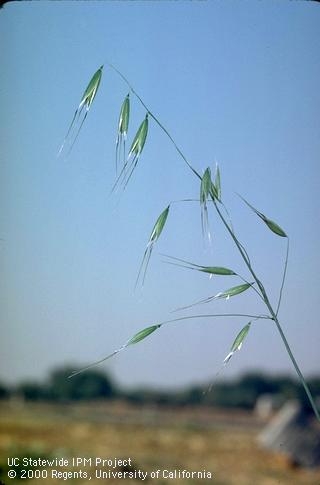
Wild oat seed head, 'only' 250 seeds per stalk (UC IPM)
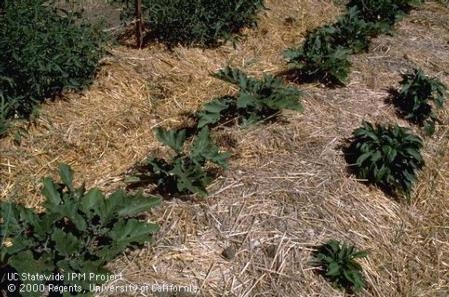
Mulch, important as always (UC IPM, CA Garden Web)
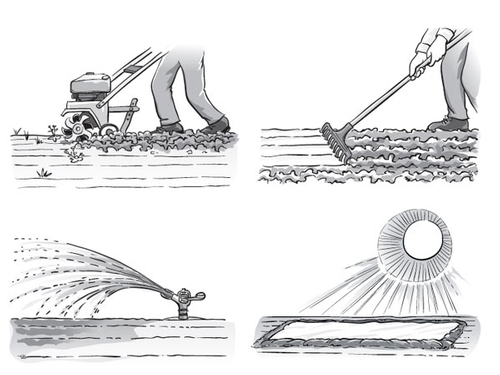
Soil solarization steps. For complete guidelines, http://ipm.ucanr.edu/PMG/PESTNOTES/pn74145.html (UC ANR)
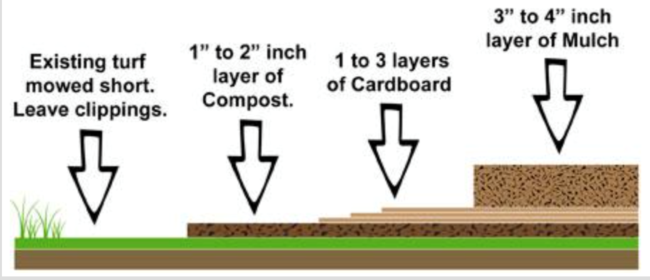
Layers for sheet mulching (Marin Master Gardeners)
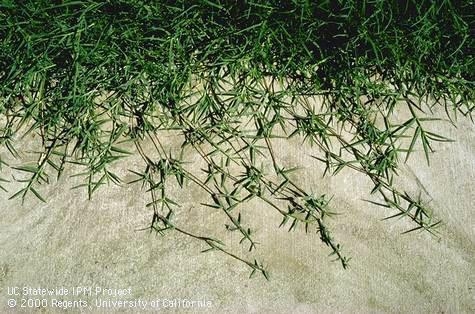
Stolons of Bermuda grass on the prowl (UC IPM)
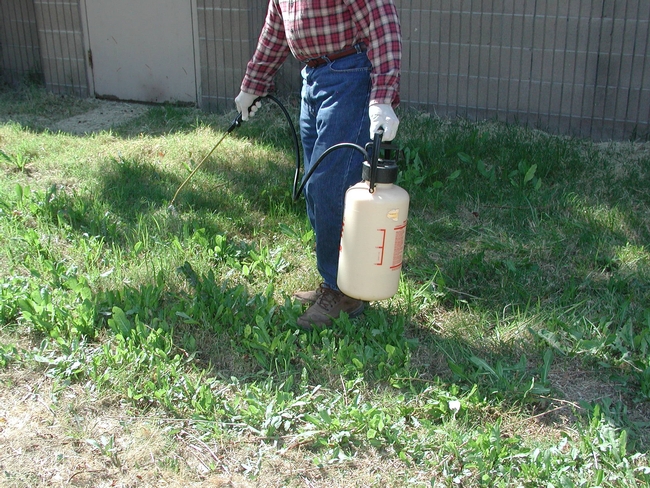
Herbicide if you must, Read Label, Follow Directions EXACTLY (UC ANR)